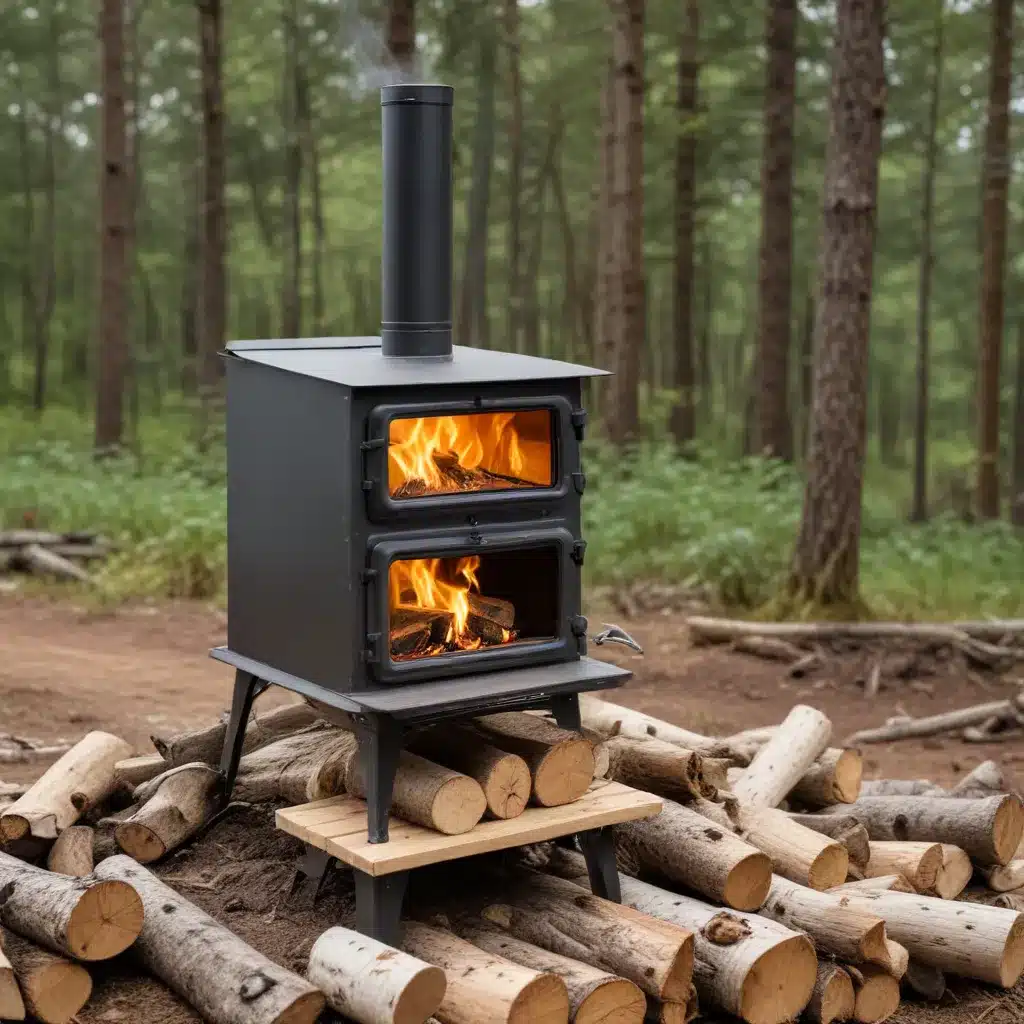
Compliance Considerations for Portable and Temporary Wood Stove Use
Navigating the Regulations: What You Need to Know About Portable and Temporary Wood Stove Installations
As a seasoned expert in wood stoves and heating solutions, I’ve encountered countless homeowners and outdoor enthusiasts seeking guidance on the regulations surrounding portable and temporary wood stove use. Whether you’re looking to heat a cabin, tent, or other temporary structure, understanding the compliance requirements is crucial to ensure safe and legal operation.
In this comprehensive article, we’ll dive into the key considerations for portable and temporary wood stove installations, covering the relevant federal regulations, state and local permitting processes, safety guidelines, and practical tips to help you stay compliant while maximizing the efficiency and convenience of your wood heating solution.
Federal Regulations: The EPA’s Oversight of Wood Stove Emissions
At the federal level, the U.S. Environmental Protection Agency (EPA) plays a pivotal role in regulating wood stove emissions through the New Source Performance Standards (NSPS) for Residential Wood Heaters, as outlined in 40 CFR Part 60, Subpart AAA. This legislation establishes emission standards and certification requirements for both stationary and portable wood stoves, ensuring that these appliances meet strict particulate matter (PM) limits.
The EPA’s regulations cover a wide range of wood-burning devices, including adjustable burn rate wood heaters, single burn rate wood heaters, and pellet stoves. Manufacturers must obtain EPA certification for each model line, demonstrating that their products comply with the applicable emission standards. This certification process involves rigorous testing by EPA-approved laboratories and third-party certifiers.
One crucial consideration for portable and temporary wood stove users is the EPA’s exemption for certain wood heater categories. For instance, camp stoves designed for temporary, outdoor use and traditional Native American bake ovens are exempt from the emission standards, provided they meet the specific definitions outlined in the regulation.
State and Local Permitting Requirements
While the EPA sets the federal guidelines, state and local authorities often have their own permitting and inspection requirements for the installation and use of portable and temporary wood stoves. It’s essential to research the regulations in your specific jurisdiction to ensure compliance.
For example, the Town of Islip, New York, has detailed requirements for portable and temporary wood stove installations. The town requires a building permit for the placement of any temporary structure, including those housing wood stoves. Additionally, the town’s building code outlines specific safety standards, such as proper chimney and venting requirements, to ensure the safe operation of these appliances.
To navigate the local permitting process, homeowners and outdoor enthusiasts should familiarize themselves with the application procedures, required documentation, and any applicable fees. Consulting with the local building or fire department can provide valuable insights and help streamline the approval process.
Ensuring Safe and Compliant Operation
Regardless of the federal, state, or local regulations, the safe and responsible use of portable and temporary wood stoves is of paramount importance. Wood stove users must adhere to the manufacturer’s instructions, which outline the proper installation, operation, and maintenance procedures to minimize the risk of fire hazards, emissions, and other safety concerns.
One key requirement is the use of appropriate fuels. The EPA’s NSPS regulation prohibits the burning of certain materials, such as garbage, yard waste, and treated wood, in affected wood heaters. Operators must only use the fuel types specified in the owner’s manual, which may include seasoned cordwood, wood pellets, or other EPA-approved fuels.
Additionally, wood stove users should be mindful of the placement and ventilation requirements for their temporary installations. Proper clearance from combustible materials, adequate airflow, and the use of approved chimneys or venting systems are essential to ensure safe operation.
Practical Tips for Portable and Temporary Wood Stove Use
To help you navigate the regulatory landscape and get the most out of your portable or temporary wood stove, consider the following practical tips:
-
Research Local Regulations: Before purchasing or installing a wood stove, thoroughly research the applicable federal, state, and local regulations in your area. Familiarize yourself with the permitting requirements and be prepared to provide any necessary documentation.
-
Choose an EPA-Certified Appliance: When selecting a portable or temporary wood stove, opt for a model that has been certified by the EPA to meet the current emission standards. This ensures that your appliance is compliant and minimizes the environmental impact.
-
Follow Manufacturer’s Instructions: Carefully read and adhere to the manufacturer’s guidelines for proper installation, operation, and maintenance of your wood stove. This includes using the recommended fuels and following the specified procedures for cleaning, ash removal, and catalytic combustor maintenance (if applicable).
-
Prioritize Safety: Ensure that your temporary wood stove installation meets all safety requirements, such as proper clearance from combustible materials, secure venting, and the use of appropriate fire-resistant materials. Consider installing smoke detectors and having a fire extinguisher on hand.
-
Maintain Proper Ventilation: Adequate airflow is essential for the safe and efficient operation of a portable or temporary wood stove. Ensure that the installation provides sufficient ventilation to prevent the buildup of harmful emissions or the risk of carbon monoxide poisoning.
-
Stay Informed and Adaptable: Regulations and best practices for portable and temporary wood stove use may evolve over time. Stay informed by regularly checking for updates from the EPA, your state, and local authorities. Be prepared to adapt your installation and operating procedures as needed to maintain compliance.
By understanding the regulatory landscape, prioritizing safety, and following best practices, you can confidently and responsibly enjoy the benefits of portable and temporary wood stove heating, whether in a cabin, tent, or other temporary structure. Remember, compliance is not only a legal requirement but also a crucial step in protecting both the environment and your own wellbeing.
For more information on wood stoves, fireplace maintenance, and sustainable heating solutions, be sure to visit the Wood Stove Heaters blog.


